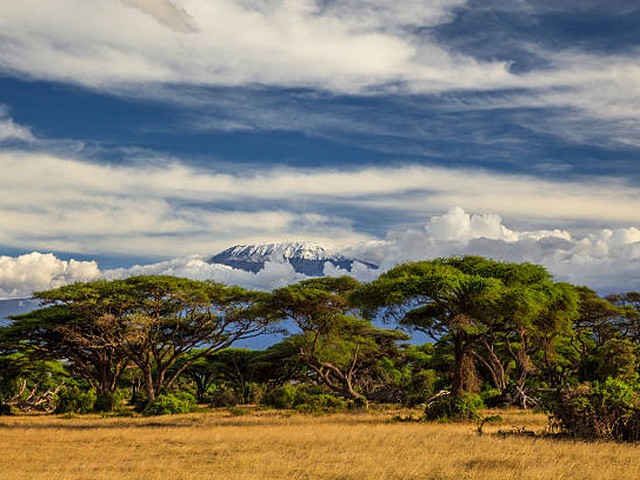Eco-friendly Alternatives For Kilimanjaro Trekking Gear: A Guide to Sustainable Climbing
Mount Kilimanjaro, the highest peak in Africa, is not just a mountain; it's a beacon for adventurers, nature lovers, and those who dream of reaching new heights. At Kilimanjaro Centre For Trekking and Ecotourism (KCTE), we understand the delicate balance between exploring our beautiful planet and preserving it for future generations. That's why today, we're exploring eco-friendly alternatives for Kilimanjaro trekking gear. Join us on this journey to make your climb sustainable, impactful, and unforgettable.
Why Choose Eco-friendly Gear?
The beauty of Kilimanjaro's snowy summit and diverse ecosystems are under threat, partly due to the environmental impact of traditional trekking practices. Eco-friendly gear minimizes this impact, reduces waste, and promotes sustainability. By choosing sustainable equipment, you're contributing to the preservation of the very landscapes you admire.
Sustainable Footwear Options
Biodegradable Materials
Look for trekking boots made from natural or recycled materials. Brands are now innovating with biodegradable rubbers and organic cotton, which offer durability without compromising the earth.
Vegan and Ethical Choices
Vegan boots eliminate the use of animal products, reducing your carbon footprint. Companies committed to ethical sourcing and production practices also ensure that your purchase supports fair labor conditions.
Gear Up with Green Apparel
Recycled Fabrics
Many outdoor apparel brands have turned to using recycled polyester and nylon, transforming plastic waste into functional, weather-resistant clothing for your Kilimanjaro adventure.
Organic and Natural Fibers
Organic cotton, bamboo, and wool are not only sustainable but also provide the breathability and insulation needed for the varying climates of Kilimanjaro.
Essential Accessories: Eco-friendly Innovations
Solar-Powered Gadgets
Embrace solar-powered headlamps and chargers to reduce dependency on disposable batteries. These gadgets are efficient and offer renewable energy solutions to keep you connected and safe.
Biodegradable Containers and Utensils
Swap out single-use plastics for biodegradable containers and utensils. Products made from bamboo or cornstarch are perfect for your meals without leaving a trace.
Responsible and Reusable Water Solutions
Water Filtration Systems
Instead of plastic water bottles, invest in a durable water filtration system. These systems allow you to safely refill from natural sources, reducing plastic waste dramatically.
Insulated Stainless Steel Bottles
An insulated stainless steel bottle will keep your water cold or your tea hot for hours, essential for the diverse climates you'll experience while trekking.
Packing and Protection: Sustainable Practices
Eco-friendly Backpacks
Opt for a backpack made from recycled materials. Look for certifications like Bluesign or GRS (Global Recycled Standard) to ensure your backpack meets international standards in environmental care.
Natural Sunscreens and Insect Repellents
Protect yourself and the environment with sunscreens and repellents free from harmful chemicals. Natural alternatives offer effective protection without the risk of contaminating local water sources.
Bringing It All Together: Plan Your Sustainable Climb
Now that you're equipped with knowledge on eco-friendly gear, how about planning your climb with a responsible partner? At Kilimanjaro Centre For Trekking and Ecotourism (KCTE), we not only provide guidance on how to gear up sustainably but also ensure that every aspect of your trek is eco-friendly.
FAQs: Eco-friendly Trekking Gear
Q: Where can I purchase eco-friendly trekking gear?
A: Many outdoor equipment stores now offer eco-friendly options. Look for brands that emphasize sustainability in their products and practices.
Q: Can eco-friendly gear withstand the harsh conditions of Kilimanjaro?
A: Absolutely! Advances in technology mean that sustainable materials no longer compromise on quality or durability. They are designed to withstand extreme conditions, ensuring your safety and comfort.
Q: How much more does eco-friendly gear cost?
A: Initially, eco-friendly options might be slightly more expensive. However, investing in durable and sustainable gear proves cost-effective in the long run, reducing the need for frequent replacements.
Q: Is there a way to recycle my gear after the trek?
A: Yes, many companies now offer recycling programs for used gear. Alternatively, consider donating to organizations that enable less fortunate adventurers to benefit from your used but serviceable equipment.
Ready to Climb Responsibly?
Embarking on an eco-friendly Kilimanjaro climb not only preserves the environment but also enriches your trekking experience. At Kilimanjaro Centre For Trekking and Ecotourism (KCTE), we are committed to guiding you every step of the way, ensuring that your adventure is as responsible as it is breathtaking. Join us in making a positive impact on the world's highest free-standing mountain by choosing sustainable practices and gear.
Are you inspired to tackle Kilimanjaro the green way? Reach out to us at KCTE to start planning your sustainable journey to the roof of Africa. Climb smart, climb sustainably, climb with Kilimanjaro Centre For Trekking and Ecotourism. Let's make memories while making a difference.




